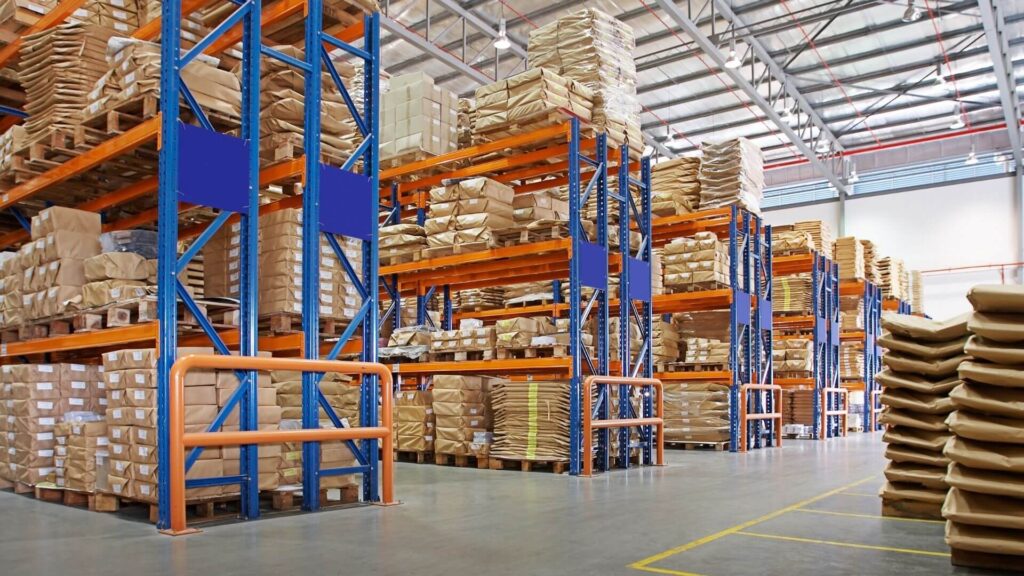ATICfzco
Your Trusted Exclusive World Wide Wholesaler
Learn More
ATICfzco
Your Trusted Exclusive World Wide Wholesaler
Learn More
ATICfzco
Your Trusted Exclusive World Wide Wholesaler
Learn More
The Journey
Where Quality Meets Technology – ATIC FZCO
Where Quality Meets Technology – ATIC FZCO
Since its establishment in 2004 in Jebel Ali, ATIC FZCO has grown from a small operation into a trusted name in the import and export of high-quality technology solutions. What started with a clear vision and strong commitment has evolved into a global business serving clients across numerous countries.
Since its establishment in 2004 in Jebel Ali, ATIC FZCO has grown from a small operation into a trusted name in the import and export of high-quality technology solutions. What started with a clear vision and strong commitment has evolved into a global business serving clients across numerous countries.
At ATIC FZCO, we are committed to providing cutting-edge printing, imaging, and power solutions with top-tier quality and competitive pricing. Our advanced technology and tailored services make us the ideal choice for businesses and individuals seeking high-performance solutions.
At ATIC FZCO, we are committed to providing cutting-edge printing, imaging, and power solutions with top-tier quality and competitive pricing. Our advanced technology and tailored services make us the ideal choice for businesses and individuals seeking high-performance solutions.
Contact with us
Contact with us
Contact with us
ABOUT US
Why Aticfzco?
At ATIC FZCO, we are committed to providing cutting-edge printing, imaging, and power solutions with top-tier quality and competitive pricing. Our advanced technology and tailored services make us the ideal choice for businesses and individuals seeking high-performance solutions.
Contact with us
ABOUT US
Why Aticfzco?
At ATIC FZCO, we are committed to providing cutting-edge printing, imaging, and power solutions with top-tier quality and competitive pricing. Our advanced technology and tailored services make us the ideal choice for businesses and individuals seeking high-performance solutions.
Contact with us
ABOUT US
Why Aticfzco?
At ATIC FZCO, we are committed to providing cutting-edge printing, imaging, and power solutions with top-tier quality and competitive pricing. Our advanced technology and tailored services make us the ideal choice for businesses and individuals seeking high-performance solutions.
Contact with us






Category
Printin Solutions
Expanding
Our Expanding
Why?
Why us?
01
Printers & Copiers
We supply a large range of laser and inkjet printers, multifunction copiers, and high-volume commercial printing devices from leading global brands. With hundreds of units in stock, we ensure availability for both bulk and individual orders.
02
Desktops & Laptops
From performance-driven desktops to lightweight business laptops, our devices come in various specs and configurations. Whether for offices, education, or technical work, we maintain a steady supply to support all operational scales.
03
Toners & Cartridges
We provide a complete line of original and compatible toners and cartridges for a wide range of printer models. Our warehouse holds thousands of units to guarantee consistent supply and fast delivery.
04
Interactive Screens & Projectors
Our display solutions include smart interactive screens, projectors for classrooms and boardrooms, and large-format digital displays. These products are ideal for collaborative environments, with options in various sizes and resolutions.
05
Professional Cameras
We offer digital cameras, surveillance systems, and accessories suited for media production, security, and documentation. Our stock includes models ranging from basic to professional-grade.
8AM-10AM
Registration
Our team will be available to assist you with any questions and ensure you are ready for the exciting days ahead. Registration opens at 8:00 AM on the first day of the conference.
10AM-11AM
Introduction of Educon
11AM-12PM
Talks from Jeremy Alton
12PM-01PM
Launch Break
8AM-10AM
Registration
Our team will be available to assist you with any questions and ensure you are ready for the exciting days ahead. Registration opens at 8:00 AM on the first day of the conference.
10AM-11AM
Introduction of Educon
11AM-12PM
Talks from Jeremy Alton
12PM-01PM
Launch Break
01PM-02PM
Light Q&A
Category
Printin Solutions
Expanding
Our Expanding
Why?
Why us?
01
Printers & Copiers
We supply a large range of laser and inkjet printers, multifunction copiers, and high-volume commercial printing devices from leading global brands. With hundreds of units in stock, we ensure availability for both bulk and individual orders.
02
Desktops & Laptops
From performance-driven desktops to lightweight business laptops, our devices come in various specs and configurations. Whether for offices, education, or technical work, we maintain a steady supply to support all operational scales.
03
Toners & Cartridges
We provide a complete line of original and compatible toners and cartridges for a wide range of printer models. Our warehouse holds thousands of units to guarantee consistent supply and fast delivery.
04
Interactive Screens & Projectors
Our display solutions include smart interactive screens, projectors for classrooms and boardrooms, and large-format digital displays. These products are ideal for collaborative environments, with options in various sizes and resolutions.
05
Professional Cameras
We offer digital cameras, surveillance systems, and accessories suited for media production, security, and documentation. Our stock includes models ranging from basic to professional-grade.
8AM-10AM
Registration
Our team will be available to assist you with any questions and ensure you are ready for the exciting days ahead. Registration opens at 8:00 AM on the first day of the conference.
10AM-11AM
Introduction of Educon
11AM-12PM
Talks from Jeremy Alton
12PM-01PM
Launch Break
8AM-10AM
Registration
Our team will be available to assist you with any questions and ensure you are ready for the exciting days ahead. Registration opens at 8:00 AM on the first day of the conference.
10AM-11AM
Introduction of Educon
11AM-12PM
Talks from Jeremy Alton
12PM-01PM
Launch Break
01PM-02PM
Light Q&A
Category
Printin Solutions
Expanding
Our Expanding
Why?
Why us?
01
Printers & Copiers
We supply a large range of laser and inkjet printers, multifunction copiers, and high-volume commercial printing devices from leading global brands. With hundreds of units in stock, we ensure availability for both bulk and individual orders.
02
Desktops & Laptops
From performance-driven desktops to lightweight business laptops, our devices come in various specs and configurations. Whether for offices, education, or technical work, we maintain a steady supply to support all operational scales.
03
Toners & Cartridges
We provide a complete line of original and compatible toners and cartridges for a wide range of printer models. Our warehouse holds thousands of units to guarantee consistent supply and fast delivery.
04
Interactive Screens & Projectors
Our display solutions include smart interactive screens, projectors for classrooms and boardrooms, and large-format digital displays. These products are ideal for collaborative environments, with options in various sizes and resolutions.
05
Professional Cameras
We offer digital cameras, surveillance systems, and accessories suited for media production, security, and documentation. Our stock includes models ranging from basic to professional-grade.
8AM-10AM
Registration
Our team will be available to assist you with any questions and ensure you are ready for the exciting days ahead. Registration opens at 8:00 AM on the first day of the conference.
10AM-11AM
Introduction of Educon
11AM-12PM
Talks from Jeremy Alton
12PM-01PM
Launch Break
8AM-10AM
Registration
Our team will be available to assist you with any questions and ensure you are ready for the exciting days ahead. Registration opens at 8:00 AM on the first day of the conference.
10AM-11AM
Introduction of Educon
11AM-12PM
Talks from Jeremy Alton
12PM-01PM
Launch Break
01PM-02PM
Light Q&A
Category
Printin Solutions
Expanding
Our Expanding
Why?
Why us?
01
Printers & Copiers
We supply a large range of laser and inkjet printers, multifunction copiers, and high-volume commercial printing devices from leading global brands. With hundreds of units in stock, we ensure availability for both bulk and individual orders.
02
Desktops & Laptops
From performance-driven desktops to lightweight business laptops, our devices come in various specs and configurations. Whether for offices, education, or technical work, we maintain a steady supply to support all operational scales.
03
Toners & Cartridges
We provide a complete line of original and compatible toners and cartridges for a wide range of printer models. Our warehouse holds thousands of units to guarantee consistent supply and fast delivery.
04
Interactive Screens & Projectors
Our display solutions include smart interactive screens, projectors for classrooms and boardrooms, and large-format digital displays. These products are ideal for collaborative environments, with options in various sizes and resolutions.
05
Professional Cameras
We offer digital cameras, surveillance systems, and accessories suited for media production, security, and documentation. Our stock includes models ranging from basic to professional-grade.
8AM-10AM
Registration
Our team will be available to assist you with any questions and ensure you are ready for the exciting days ahead. Registration opens at 8:00 AM on the first day of the conference.
10AM-11AM
Introduction of Educon
11AM-12PM
Talks from Jeremy Alton
12PM-01PM
Launch Break
8AM-10AM
Registration
Our team will be available to assist you with any questions and ensure you are ready for the exciting days ahead. Registration opens at 8:00 AM on the first day of the conference.
10AM-11AM
Introduction of Educon
11AM-12PM
Talks from Jeremy Alton
12PM-01PM
Launch Break
01PM-02PM
Light Q&A


10+
Scopes and Topic
The largest science conference

10+
Scopes and Topic
The largest science conference


10+
Scopes and Topic
The largest science conference

10+
Scopes and Topic
The largest science conference


10+
Scopes and Topic
The largest science conference

10+
Scopes and Topic
The largest science conference


10+
Scopes and Topic
The largest science conference

10+
Scopes and Topic
The largest science conference
Authorized Distributor for Top Brands
We are a leading distributor for world-renowned brands like Epson, Canon, and more — ensuring you get authentic products backed by official support.
Learn More
Authorized Distributor for Top Brands
We are a leading distributor for world-renowned brands like Epson, Canon, and more — ensuring you get authentic products backed by official support.
Learn More
Exclusive Imports from Jebel Ali Port
All our products are directly and exclusively imported through Jebel Ali Port, guaranteeing high quality, competitive pricing, and reliable supply.
Learn More
Original Parts & Consumables
We offer a wide selection of original toner, ink cartridges units, and authentic inks for printers — ensuring the best performance and longevity for your devices.
Learn More
Original Parts & Consumables
We offer a wide selection of original toner, ink cartridges units, and authentic inks for printers — ensuring the best performance and longevity for your devices.
Learn More
Authorized Distributor for Top Brands
We are a leading distributor for world-renowned brands like Epson, Canon, and more — ensuring you get authentic products backed by official support.
Learn More
Exclusive Imports from Jebel Ali Port
All our products are directly and exclusively imported through Jebel Ali Port, guaranteeing high quality, competitive pricing, and reliable supply.
Learn More
Original Parts & Consumables
We offer a wide selection of original toner, ink cartridges units, and authentic inks for printers — ensuring the best performance and longevity for your devices.
Learn More
Authorized Distributor for Top Brands
We are a leading distributor for world-renowned brands like Epson, Canon, and more — ensuring you get authentic products backed by official support.
Learn More
Exclusive Imports from Jebel Ali Port
All our products are directly and exclusively imported through Jebel Ali Port, guaranteeing high quality, competitive pricing, and reliable supply.
Learn More
Original Parts & Consumables
We offer a wide selection of original toner, ink cartridges units, and authentic inks for printers — ensuring the best performance and longevity for your devices.
Learn More
Show More
Show More
Show More
1 of 3
1 of 3
ُ
High-Performance Technology for Every Need
At ATIC FZCO, we offer a wide range of high-quality devices tailored for various industries. From advanced thermal printers to professional-grade cameras, our products are designed to deliver efficiency, precision, and reliability to businesses and professionals.
Printers & Copiers
Desktops & Laptops
Toners & Cartridges
Interactive Screens & Projectors
Professional Cameras

Laser Printer


Monochrome Laser Printer


Multifunction Laser Printer


Digital Scanner


And Much More


Scanner


Laser Printer


Monochrome Laser Printer


Multifunction Laser Printer


Digital Scanner


And Much More


Scanner


Laser Printer


Monochrome Laser Printer


Multifunction Laser Printer


Digital Scanner


And Much More


Scanner


Laser Printer


Monochrome Laser Printer


Multifunction Laser Printer


Digital Scanner


And Much More


Scanner

ُ
High-Performance Technology for Every Need
At ATIC FZCO, we offer a wide range of high-quality devices tailored for various industries. From advanced thermal printers to professional-grade cameras, our products are designed to deliver efficiency, precision, and reliability to businesses and professionals.
Printers & Copiers
Desktops & Laptops
Toners & Cartridges
Interactive Screens & Projectors
Professional Cameras

Laser Printer


Monochrome Laser Printer


Multifunction Laser Printer


Digital Scanner


And Much More


Scanner


Laser Printer


Monochrome Laser Printer


Multifunction Laser Printer


Digital Scanner


And Much More


Scanner


Laser Printer


Monochrome Laser Printer


Multifunction Laser Printer


Digital Scanner


And Much More


Scanner


Laser Printer


Monochrome Laser Printer


Multifunction Laser Printer


Digital Scanner


And Much More


Scanner

ُ
High-Performance Technology for Every Need
At ATIC FZCO, we offer a wide range of high-quality devices tailored for various industries. From advanced thermal printers to professional-grade cameras, our products are designed to deliver efficiency, precision, and reliability to businesses and professionals.
Printers & Copiers
Desktops & Laptops
Toners & Cartridges
Interactive Screens & Projectors
Professional Cameras

Laser Printer


Monochrome Laser Printer


Multifunction Laser Printer


Digital Scanner


And Much More


Scanner


Laser Printer


Monochrome Laser Printer


Multifunction Laser Printer


Digital Scanner


And Much More


Scanner


Laser Printer


Monochrome Laser Printer


Multifunction Laser Printer


Digital Scanner


And Much More


Scanner


Laser Printer


Monochrome Laser Printer


Multifunction Laser Printer


Digital Scanner


And Much More


Scanner

FAQ
Frequently Asked Question
I have a question
FAQ
Frequently Asked Question
I have a question
FAQ
Frequently Asked Question
I have a question
What is Aticfzco?
Al Fadhil Trading International – ATIC FZCO is a leading trading located at Dubai Jabal-Ali, and distribution company established in U.A.E. in 2004. We specialize in printing solutions, imaging technology, power management systems, and business electronics, serving markets across the Middle East and beyond.
How to become a strategic partner
What are our Products?
What is Aticfzco?
Al Fadhil Trading International – ATIC FZCO is a leading trading located at Dubai Jabal-Ali, and distribution company established in U.A.E. in 2004. We specialize in printing solutions, imaging technology, power management systems, and business electronics, serving markets across the Middle East and beyond.
How to become a strategic partner
What are our Products?
What is Aticfzco?
Al Fadhil Trading International – ATIC FZCO is a leading trading located at Dubai Jabal-Ali, and distribution company established in U.A.E. in 2004. We specialize in printing solutions, imaging technology, power management systems, and business electronics, serving markets across the Middle East and beyond.
How to become a strategic partner
What are our Products?
What is Aticfzco?
Al Fadhil Trading International – ATIC FZCO is a leading trading located at Dubai Jabal-Ali, and distribution company established in U.A.E. in 2004. We specialize in printing solutions, imaging technology, power management systems, and business electronics, serving markets across the Middle East and beyond.
How to become a strategic partner
What are our Products?


Al-Fadhil Trading International Aticfzco
Al-Fadhil Trading International Aticfzco
Al-Fadhil Trading International Aticfzco
Copyright© 2025. Aticfzco. All Right Reserved.
Copyright© 2025. Aticfzco. All Right Reserved.
Copyright© 2025. Aticfzco. All Right Reserved.


















